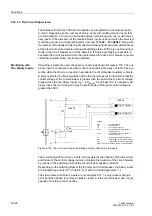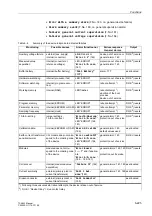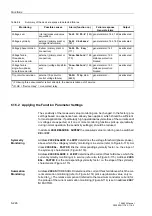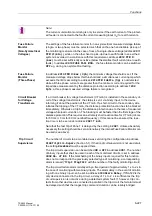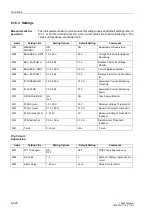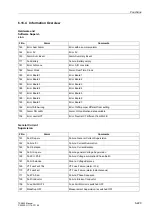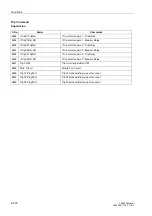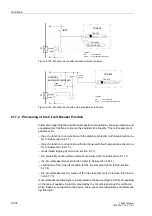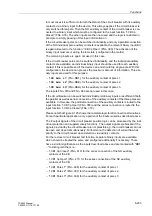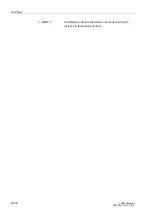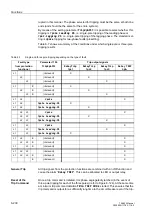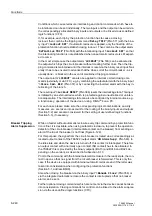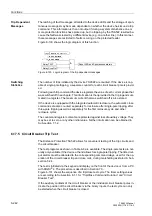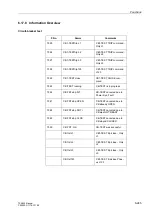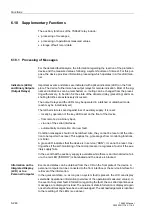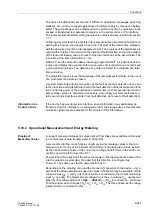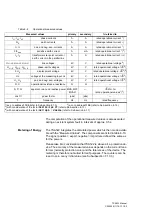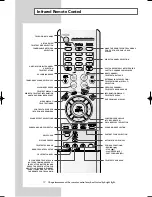
Functions
6-235
7SA522 Manual
C53000-G1176-C119-2
6.17.3 Overall Fault Detection Logic of the Device
Phase Segregated
Fault Detection
The fault detection logic combines the fault detection (pick-up) signals of all protection
functions. In the case of those protection functions that allow for phase segregated
pick-up, the pick-up is output in a phase segregated manner. If a protection function
detects an earth fault, this is also output as a common device alarm. The following
alarms are therefore available “
5HOD\3,&.83/
”, “
5HOD\3,&.83/
”, “
5HOD\
3,&.83/
” and “
5HOD\3,&.83(
”.
The annunciations above can be allocated to LEDs or output relays. For the local dis-
play of fault event messages and for the transmission of event messages to a personal
computer or a centralized control system, several protection functions provide the pos-
sibility to display the faulted phase information in a single message, e.g.
“
” for the distance protection fault detection in L1–L2–E only one
such messages appears. It represents the complete definition of the fault detection.
General Fault
Detection
All fault detection signals are combined with a logic
OR
function and cause a general
fault detection of the device. It is designated with “
”. If no protection
function is picked-up anymore, the “
” will reset
(message “Going”).
The general fault detection is a prerequisite for a number of internal and external con-
sequential functions. The following belong to the internal functions which are control-
led by the general fault detection:
•
Initiation of a fault event report: from the pick-up to the reset of the general fault de-
tection the fault messages are stored in the fault event recording.
•
Initialisation of the fault recording: the storage of analogue and binary traces can
additionally be made dependant on the appearance of a trip command.
•
Generation of spontaneous messages. Certain fault messages may appear in the
display of the device as so called spontaneous messages (see “Spontaneous Mes-
sages” below). This display may additionally be made dependant on the appear-
ance of a trip command.
•
Start action time of automatic reclosure (if available and used)
External functions may be controlled via an output contact. The following are exam-
ples:
•
Automatic reclose devices,
•
Channel boost in conjunction with signal transmission by PLC,
•
Initiation of further supplementary devices etc.
Spontaneous
Messages
Spontaneous messages are fault messages which appear in the display automatically
following a general fault detection of the device or trip command. In the 7SA522 these
are:
•
“
”: protection function which picked up most recently;
•
“
”:
the duration of the general fault detection up to the reset of
the device; the time is indicated in ms;
•
“
”:
the duration of the general fault detection up to the occurrence
of the first trip command of the device; the time is indicated
in ms;
Summary of Contents for siprotec 7SA522
Page 20: ...7SA522 Manual C53000 G1176 C119 2 ...
Page 64: ...7SA522 Manual C53000 G1176 C119 2 ...
Page 89: ...SIPROTEC 4 Devices 4 25 7SA522 Manual C53000 G1176 C119 2 Figure 4 20 CFC Logic example ...
Page 408: ...7SA522 Manual C53000 G1176 C119 2 ...
Page 456: ...7SA522 Manual C53000 G1176 C119 2 ...
Page 516: ...7SA522 Manual C53000 G1176 C119 2 ...
Page 620: ...Appendix B 48 ...


